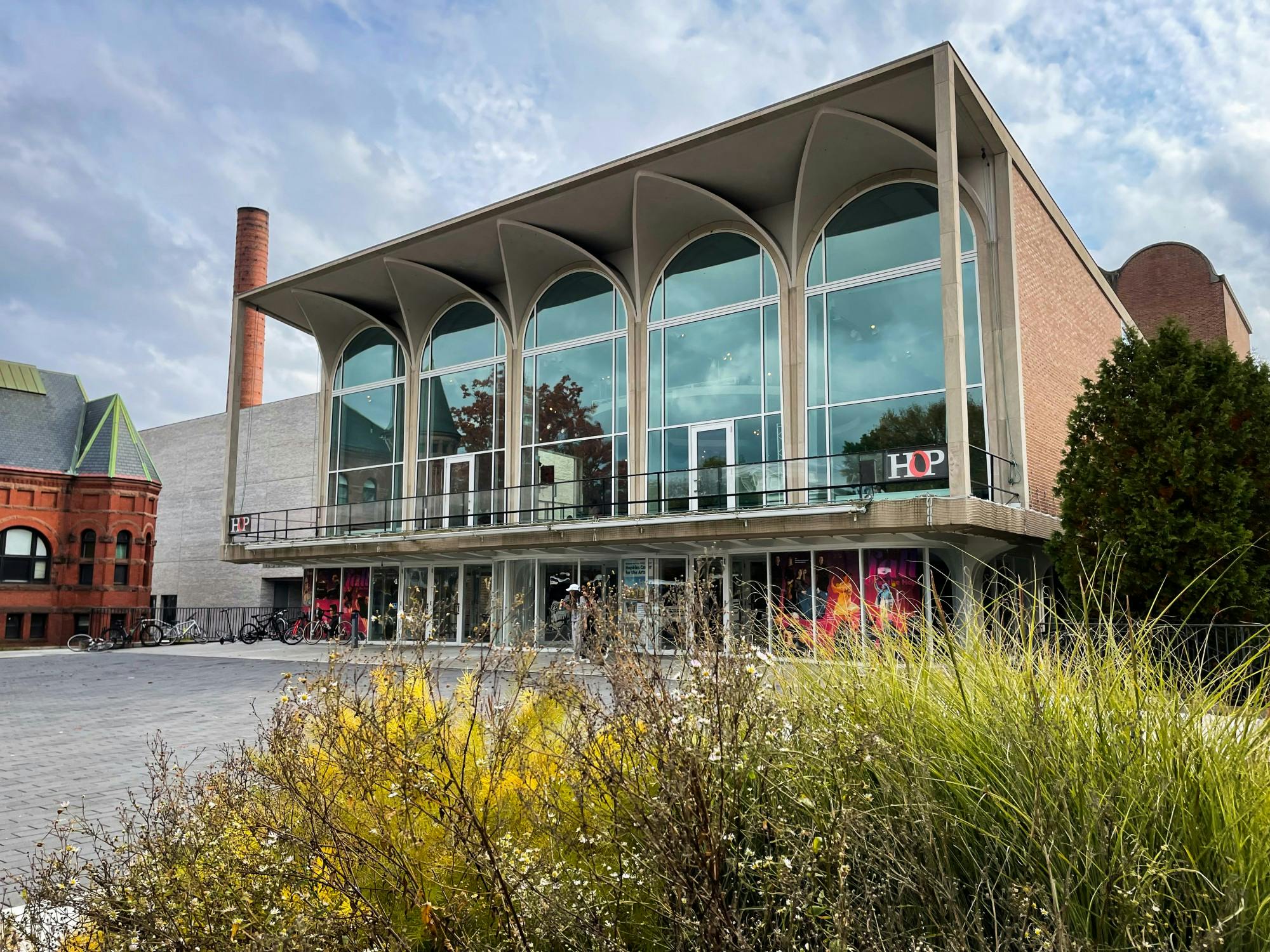Since 1962, The Hopkins Center for the Arts has provided a space for creativity, collaboration and community at Dartmouth. As one of the largest buildings on campus — standing at 175,000 square feet — the Hop is preparing to undergo a major renovation guided by the design firm Snøhetta. The renovation aims to create spaces that are welcoming and accessible, as well as introduce more places to gather and experience the arts as a community.
Mary Lou Aleskie, the Howard L. Gilman ’44 director of the Hopkins Center, came to the College in 2017 to advance and accelerate Dartmouth’s next steps of art development — chiefly, the renovation of the Hopkins Center.
According to Aleskie, The Hopkins Center renovations and upgrades have been in the works for a long time, but it was not until investment in the arts district began to gain momentum with renovations on the Hood Museum of Art that the Hop was recognized as a space that needed advancement in order to support the arts.
Aleskie added that the College’s arts programs have grown beyond the current capacity of the Hopkins Center — even with film, media and studio art being held in the Black Family Visual Arts Center and the newly renovated Hood Museum. This renovation is meant to look for ways to expand these spaces and make them more accessible to all people on campus.
“We are doing all we can to increase capacities for everyone,” Aleskie said. “Everyone means students who are arts students and students who just love being in the building and in a creative space.”
The project staff knew the Hop renovations would be a big undertaking that needed to be broken into phases, according to director of external affairs at the Hop Michael Bodel.
“The Hop is the most complex building on campus, and this is the largest renovation and expansion since it was built sixty years ago,” Bodel said. “There have been countless challenges to navigate. That said, we have been working collaboratively with Campus Planning and other departments across Dartmouth over the last few years and are thrilled for the project to be getting underway this winter.”
According to Aleskie, one goal of the renovation is to transform the mid-twentieth-century building — with its limitations in terms of technical capacity and adaptability — and turn it into a modern twenty-first-century building with the capacity to reimagine the arts.
The renovation plans paint a picture of a completely unrecognizable Hop — the addition of a new forum and an exterior plaza will act as an invitation to engage with the arts, while a new recital hall overlooking the Green will feature flexible seating, optimized acoustics and enough room to fit the largest ensembles on campus.
According to the Hop’s website, The Top of the Hop will also be reimagined as a place to study, collaborate and host events — and Alumni Hall will be renovated to be a state-of-the-art performance laboratory with advanced sound, lighting, projection and broadcast technologies. The building will also feature music rehearsal spaces, a theater rehearsal lab, a seminar room, additional practice rooms and a dance studio. Student workshops such as the Claflin Jewelry Studio and the Ceramics Studio will also be refurbished and return to their original spots in the Hop.
Since most of the Hop will be closed during the renovations, BVAC will become one of the main hubs for arts programming during the process. According to Bodel, while the student workshop experiences will remain somewhat available during the winter, some offerings — depending on their popularity and ability to adjust to new spaces in BVAC — will not be possible due to the technical limitations of the space. The jewelry studio, for one, is preparing to shift its offerings to BVAC.
“The jewelry studio has been working hard with the College planners to create a more compact studio in BVAC that will still retain all of its current technologies and the same level of Dartmouth student occupancy,” jewelry studio director Jeffrey Georgantes said.
Some Hop Fellows — students in a year-long residency program designed to teach them about arts leadership and management — said they are excited for the renovation. Others, however, said they worry about the availability of certain resources during the renovation.
“I’m most excited for the renovations to the music practice rooms and performance spaces, since I spend a lot of time in those areas,” Hop Fellow Emma Ratchford ’25 said. “But I know the next couple years are going to be challenging as the performing arts at Dartmouth will be displaced in a sense without the Hop to house us.”
Although the reopening of the Hopkins Center is planned for fall 2025, some parts of the building could be accessible sooner, depending on the construction process. According to Aleskie, the Courtyard Cafe will remain open for the entirety of the renovation process.
In spite of the renovations, Aleskie added, “we are doing all we can to make sure that the arts are alive, visible and serving everyone in locations across campus.”




